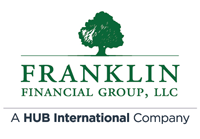 Payroll works the same way in almost every full-time job. Employees earn money by working, and they all receive their earnings on a set date: payday. However, in an era of same-day shipping, on-demand movies, and unlimited mobile access, individuals are increasingly expecting prompt access to nearly anything they need. For employees, this also means getting quicker access to their paychecks.
Payroll works the same way in almost every full-time job. Employees earn money by working, and they all receive their earnings on a set date: payday. However, in an era of same-day shipping, on-demand movies, and unlimited mobile access, individuals are increasingly expecting prompt access to nearly anything they need. For employees, this also means getting quicker access to their paychecks.
What is On-Demand Pay?
On-demand pay, or earned wage access (EWA), is an employee payment method in which employees can access wages already earned and owed before the traditional bi-weekly or monthly paycheck.
As Americans face rising costs for everyday essentials, health care and other needs, on-demand pay provides employees with more control over their finances. Did you know that fewer than four in 10 Americans could afford an unexpected $1,000 expense? And we all know that expenses don’t occur on a neat two or four-week cycle!
Growing Payroll Trend
Financial wellness is the new “must-have” employee benefit . According to recent data, 64% of Americans are living paycheck to paycheck. Financial stress can lead to unproductive, disengaged or absent employees. On-demand pay can offer employees access to some or all of their earned wages to help pay bills on time and better manage their living expenses. Additionally, Millennials and Gen Zers are asking for on-demand pay and they’re willing to limit their job searches to employers that offer that option.
Financial Wellness
People show up to work each day because of their desire for long-term financial wellness. Often, financial wellness has been approached with contributions to a 401(k) plan and other benefit-related compensation. But what about everything between now and retirement? Things go wrong. Cars break down, houses need repairs and there are unexpected medical bills. For many workers, waiting 2 weeks or more to get their paychecks leaves them in a bind. In the past, employees have turned to credit cards and payday loans to make ends meet when needed. However, these options are notorious for having high interest rates and hefty fees.
In today’s fast-paced culture – where Americans can get anything with the click of a button – it’s not surprising that on-demand pay appeals to many workers who don’t have savings to handle unexpected expenses. On-demand pay is projected to grow quickly. Three years ago, very few companies had even heard of it. Today, it’s not a question of whether a company will adopt the benefit but when.
On-Demand Pay Execution
Of course, this means that companies might need to update their payroll infrastructure because on-demand pay would require some changes with the payroll department. However, there are various automated solutions that offer systems that can easily integrate with most payroll software. These solutions enable employees to check how much they have earned and withdraw a percentage of their earnings without putting stress on the payroll team. When employees access their net pay before their regular pay date, the wages they access are deducted from the total earnings they’d receive on pay day.
Methods to Provide On-Demand Pay:
- Direct Deposits – Employers provide immediate wages to an employee’s bank account.
- Prepaid Debit Cards – Employers provide a prepaid or payroll card for employees who wish to avoid banks.
In tough economic times, the companies that take the best care of their employees are the ones that emerge stronger. While on-demand pay is a newer concept, it’s one that is worth serious consideration – especially because it shows all signs of staying around for the long haul.
